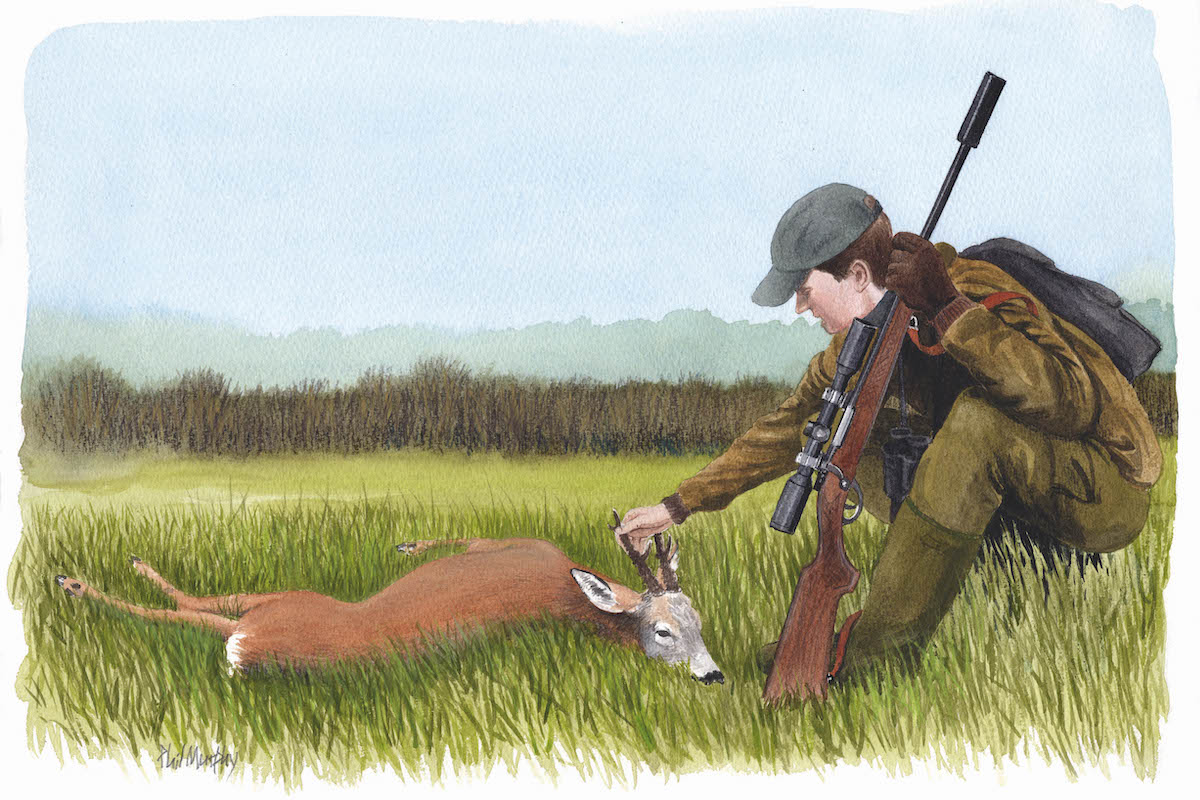Roe deer hunting – the five minute cull
Just having a look at the ground pays off for Jon - and the roe population

Those deer that have already been taken are in good condition
We are in the thick of the doe season as I write and trying to catch up the numbers on one estate.
Parts of this ground can be quite disturbed with walkers and people enjoying time in the woodland. It also has two good shoots that run from November to the end of January. All of the above will make roe deer hunting somewhat more difficult with the time-to-carcase ratio rising alarmingly. We tend to leave most of the effort until February and March. This can be risky, especially if the weather comes in as it so often does at this time of year.
British deer: A guide to identifying the six species found here and where to stalk them
The six species of deer to be found in England, their origins and locations.
Deer seasons in the UK. When can deer be hunted?
The deer seasons in the UK have been precisely organised to give deer protection when they need it, to produce…
Broken glass
I was stalking yesterday and every step was louder than walking on broken glass, all we saw were deer vanishing into the distance, which didn’t surprise me. We could, of course, have chosen to stay in a high seat, but with a temperature of -8°C I didn’t fancy staying put in a seat.
I was wearing all the base layers I possess to try and keep the freeze from my bones. It doesn’t seem to matter what type of gear you wear or how much, the ice still gets through.
This time of year can be testing for roe deer. If the chill really bites and stays for a prolonged period they will suffer, especially if they haven’t been able to build up their reserves before the winter arrives. The doe is now pregnant, which takes more of her energy. Up to December the foetus is in a state of limbo due to embryonic diapause (delayed implantation). In that state it isn’t demanding huge amounts of energy from her. Once that chemical message, which is a protein, sends the missive to the female’s hormones to allow embryo growth the energy really starts to be absorbed.
Last year’s youngsters are particularly vulnerable at this time. The good news is that the carcases we have taken up to now (February) are in really good condition, with fat stores still covering the kidneys and many of our culls have had twins forming. That all bodes well for the roe population, they are tough and resilient.

Young trees and regeneration will be targeted by the deer
Nasty shock
To the deer manager this is also the time to keep an eye on those plantations. Food is short and it is young trees and regeneration that will be the target. All may look well now, but take a look in March and there could be a nasty shock in store.
There can always be a surprise with roe and we had one yesterday. As we stealthily (I wish) crunched through the ice, two deer were put up to our left. One was quite a small doe, which was followed by a very small doe kid. I had not seen this pair before. Most of our deer will give birth in late May and June. This youngster may well have been later than that, so hadn’t had the best start in life. If it missed the lush herbage in May and June the doe will not have been able to produce the richest milk. The kid is lucky to have survived to date and if this biting cold prevails it will probably be fatal for the youngster.
I will attempt to keep a closer eye out for this pair in the next month and certainly a kid like this should be on the cull list.
I was hunting, not really looking to despatch anything, just mooching around a dense woodland to see what signs were around. There were slots (tracks) going into the wood and from what I could see these tracks were of one or two deer. There was a small clearing not far into the wood and logged the fact into my memory that it was the perfect place for a high seat — the rest of the wood was too dense.
Roe deer hunting luck
I say I was hunting, it is what I do, looking around to see what may be there. The signs tempted me to return three mornings in a row hoping for Lady Luck to smile on me. On the third trip I had just stepped in and the doe was on the clearing at 15m away.
The shot was taken and I had my cull in five minutes. Background information is the key. If there are slots or dung, even if you don’t see deer, they are there and perseverance — I would call that hunting — pays off.
Buck season
The buck season opens on 1 April and that is just around the corner. This is always an exciting time because the larger bucks will be battling for territory. This last month has proven to be an eye-opener. We spotted two bucks on 23 January and one was virtually out of velvet; the other had half his velvet off. That is the earliest I have seen roebucks in that state throughout my career managing deer.
Again it could be that to date they are as fit as a butcher’s dog and does that move things forward a little? I don’t know, but it would seem a sensible presumption. I am sure there is an explanation, someone out there may know.










